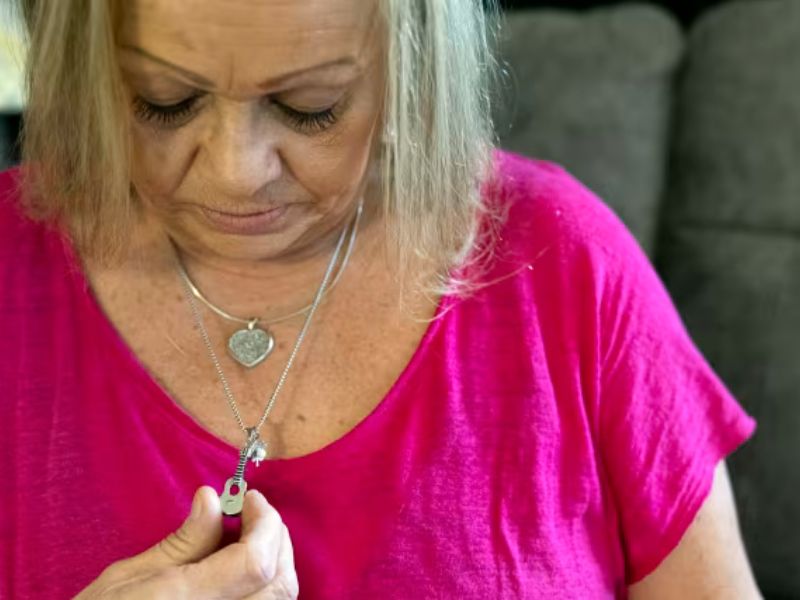Tragic Loss in Baltimore: Seeking Answers for Trea Ellinger’s Sedation and Restraint
When Trea Ellinger left a drug rehab facility in Baltimore last summer, his mother, Lori Ellinger, was cautiously optimistic. Trea, at 29, seemed to be taking steps toward recovery. He assured her he had his medications and plans to meet his girlfriend. However, just a day later, Trea was dead—not from the violence his mother feared, but following an encounter with first responders in downtown Baltimore.
Trea’s death occurred after he was sedated and restrained by police and medics. Despite acknowledging the risks associated with the prone position, first responders allowed Trea to lie face down while handcuffed for several minutes. This incident highlights a disturbing trend across the nation: the increasing use of sedatives by police on individuals in custody.

An Associated Press investigation revealed that the practice of administering sedatives to detainees has grown significantly over the past 15 years. Originally intended to reduce violence and save lives, this strategy has, paradoxically, resulted in preventable deaths. Trea Ellinger’s case is a tragic addition to this list.
The autopsy report stated that Trea died from an overdose of an antidepressant and methadone, the latter often prescribed to manage opioid addiction. However, Lori Ellinger disputes these findings, questioning why paramedics resorted to using an injectable sedative on her son.
“I do believe they killed my son with that shot,” Lori said. “He shouldn’t be dead at 29 years old.”
Experts suggest that Trea’s death could have resulted from the combined effects of sedation and the dangerous prone position, which can impede breathing. Despite these concerns, the Baltimore City Fire Department, which oversees the city’s medics, has not commented on Trea’s death, citing potential future litigation. The first responders involved have not been charged, and the Ellinger family has not pursued legal action.
The Maryland attorney general’s office released an investigative report in May, shedding light on the events leading up to Trea’s death. According to the report, a 911 caller reported a man lying in a downtown Baltimore street, speaking incoherently and displaying combative and distressed behavior.
Body camera footage from the police shows officers handcuffing Trea at the medics’ request. Initially, they positioned him on his side, but after he was injected with midazolam, a sedative, they moved him onto a stretcher.
Midazolam is a powerful sedative often used in medical settings for its rapid calming effects. However, its use in field situations, especially involving individuals under stress or with compromised health, raises significant concerns. The sedative can depress the respiratory system, particularly dangerous when combined with physical restraints and the prone position.
The day Trea Ellinger died, first responders were faced with a challenging situation. Trea was reportedly in the middle of the street, acting erratically and posing a potential danger to himself and others. The decision to sedate him was likely made in an attempt to manage his agitation and ensure his safety. However, the outcome was tragically different.
The broader issue of sedative use by police and medics is controversial. Advocates argue that sedatives can de-escalate potentially violent situations and reduce the risk of injury to both detainees and officers. Critics, however, point to the inherent risks, particularly when sedatives are used without thorough medical oversight.
In Trea’s case, the autopsy findings did not address whether the sedative or the prone position contributed to his death. Independent experts suggest that both factors likely played a role. The exact circumstances and decisions made by the first responders are under scrutiny, but without clear answers, Lori Ellinger is left with unresolved grief and unanswered questions.
Must Read:
- Avery Street Civil War Hospital Building Purchased for Renovation
- King Charles III’s Exciting Visit to Australia and Samoa During Cancer Recovery
This case underscores the need for rigorous protocols and training for first responders regarding the use of sedatives and physical restraints. Ensuring that such interventions are used safely and appropriately is crucial to prevent similar tragedies. Additionally, it highlights the importance of transparency and accountability in the aftermath of such incidents.
For families like the Ellingers, the pursuit of justice and clarity is a painful journey. Trea’s death is a stark reminder of the complexities and dangers involved in the intersection of law enforcement, medical intervention, and mental health crises. As the debate over sedative use continues, the ultimate goal must be to protect and preserve lives, ensuring that no other family has to endure a loss like that of Trea Ellinger.

